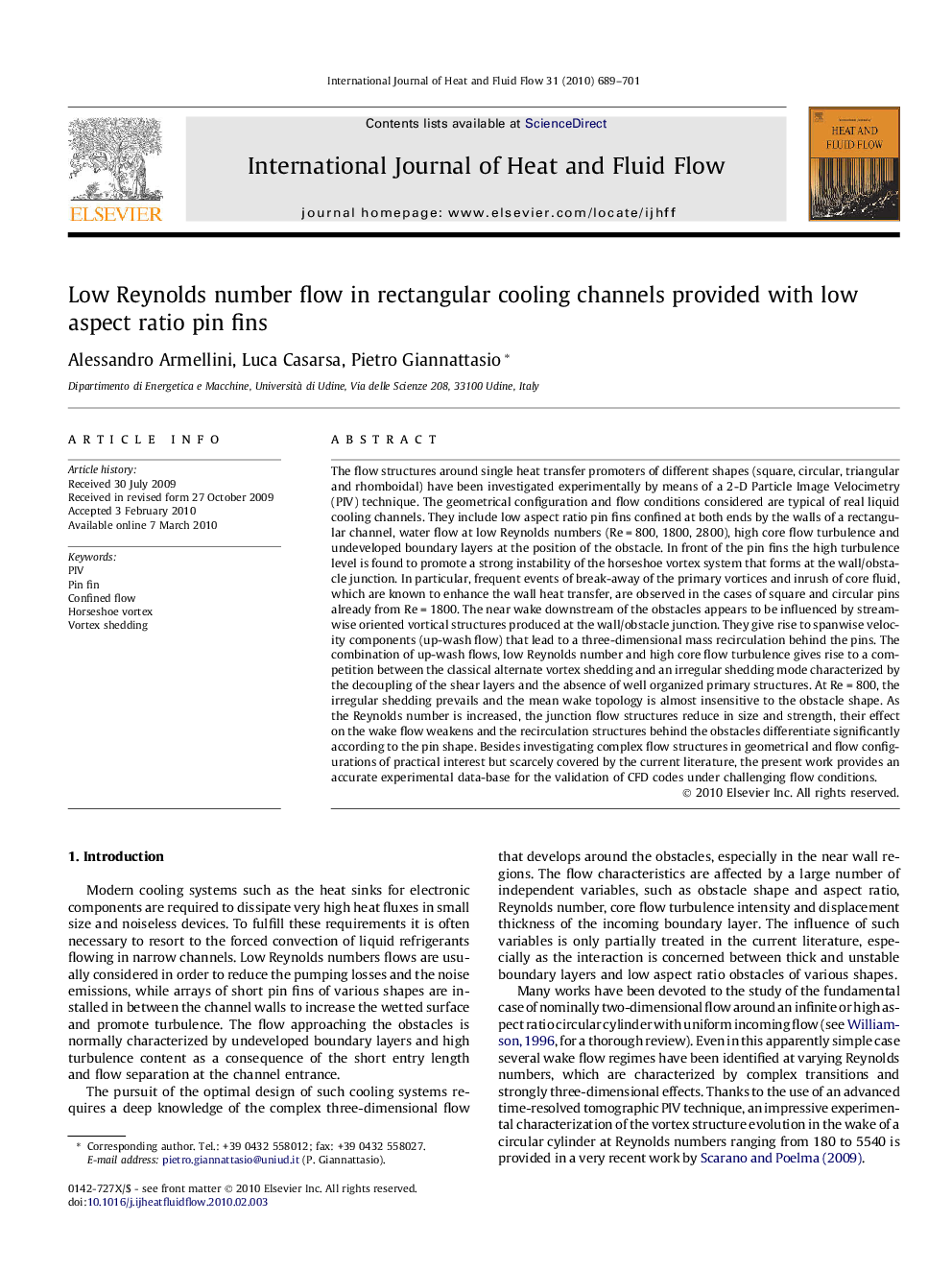| کد مقاله | کد نشریه | سال انتشار | مقاله انگلیسی | نسخه تمام متن |
|---|---|---|---|---|
| 655323 | 1457657 | 2010 | 13 صفحه PDF | دانلود رایگان |

The flow structures around single heat transfer promoters of different shapes (square, circular, triangular and rhomboidal) have been investigated experimentally by means of a 2-D Particle Image Velocimetry (PIV) technique. The geometrical configuration and flow conditions considered are typical of real liquid cooling channels. They include low aspect ratio pin fins confined at both ends by the walls of a rectangular channel, water flow at low Reynolds numbers (Re = 800, 1800, 2800), high core flow turbulence and undeveloped boundary layers at the position of the obstacle. In front of the pin fins the high turbulence level is found to promote a strong instability of the horseshoe vortex system that forms at the wall/obstacle junction. In particular, frequent events of break-away of the primary vortices and inrush of core fluid, which are known to enhance the wall heat transfer, are observed in the cases of square and circular pins already from Re = 1800. The near wake downstream of the obstacles appears to be influenced by streamwise oriented vortical structures produced at the wall/obstacle junction. They give rise to spanwise velocity components (up-wash flow) that lead to a three-dimensional mass recirculation behind the pins. The combination of up-wash flows, low Reynolds number and high core flow turbulence gives rise to a competition between the classical alternate vortex shedding and an irregular shedding mode characterized by the decoupling of the shear layers and the absence of well organized primary structures. At Re = 800, the irregular shedding prevails and the mean wake topology is almost insensitive to the obstacle shape. As the Reynolds number is increased, the junction flow structures reduce in size and strength, their effect on the wake flow weakens and the recirculation structures behind the obstacles differentiate significantly according to the pin shape. Besides investigating complex flow structures in geometrical and flow configurations of practical interest but scarcely covered by the current literature, the present work provides an accurate experimental data-base for the validation of CFD codes under challenging flow conditions.
Journal: International Journal of Heat and Fluid Flow - Volume 31, Issue 4, August 2010, Pages 689–701